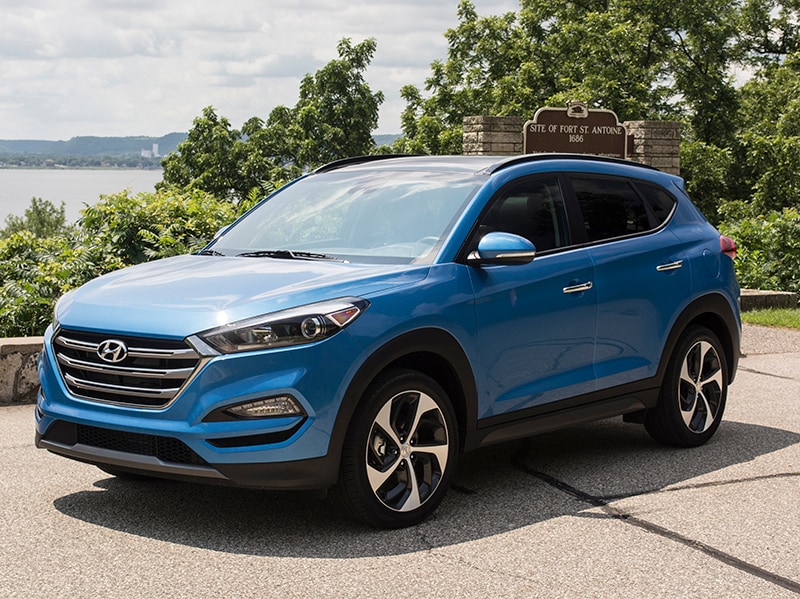Recent Articles
Popular Makes
Body Types
2016 Hyundai Tucson: First Drive
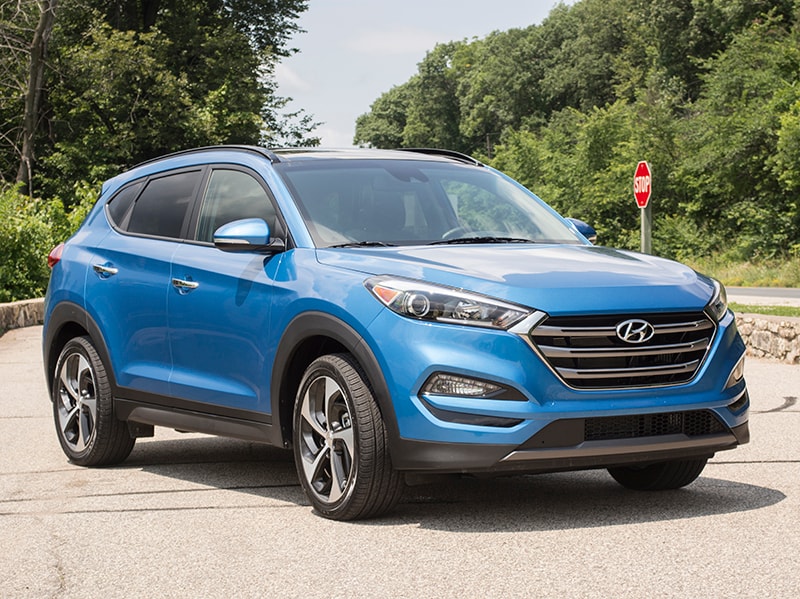
Trying to make a name for yourself in the compact crossover class is a tough deal considering how much the market has grown in the past few years. Stalwarts such as the Honda CR-V, Subaru Forester, and Toyota RAV4 have been around since the late nineties and have heritage on their side. Other models such as the Mazda CX-5 and Nissan Rogue have design and some clever tricks up their sleeve.
So what does new entrant in the compact crossover class, the 2016 Hyundai Tucson, have to offer? Well, it seems to follow the formula that Hyundai has perfected over the past few years; offer a vehicle with great looks, an impressive feature set, and a price tag that can make your jaw drop.
Models and Pricing
The 2016 Hyundai Tucson lineup begins with the base SE. With a base price of $23,595 (including an $895 destination charge), the SE comes with many essentials that buyers are looking for. Standard equipment includes a 2.0L four-cylinder, six-speed automatic transmission, keyless entry, five-inch color touchscreen with a backup camera; and a driver’s blind spot mirror. It should be noted that the SE model only comes in front-wheel drive.
Next is the SE Popular. This model includes the Popular equipment package that adds a power driver’s seat, LED daytime running lights, side rails for the roof, and an auto-down/up driver’s power mirror. This is also the first trim where you can option all-wheel drive, which adds a windshield de-icer to the list of standard equipment. Prices start at $24,345 for the front-wheel drive model, and $25,745 for the all-wheel drive model.
The Eco trim is next up and gets a turbocharged 1.6L four-cylinder, a seven-speed dual-clutch automatic, chrome-tipped dual exhausts, and premium front and rear fascias. Eco models start at $25,045 for front-wheel drive and $26,445 for all-wheel drive.
Following the Eco is the Sport trim, which gets 19-inch wheels, hands-free smart tailgate with auto open, push-button start, blind spot monitoring with rear cross traffic alert; lane change assist, and heated front seats. $27,045 gets you into the Sport front-wheel drive model, while an extra $1,400 can net you all-wheel drive.
Topping off the 2016 Tucson lineup is the Limited trim which boasts a number of premium features such as LED head and taillights; leather seats, a power seat for the passenger, eight-inch touchscreen with navigation; dual-zone climate control, and Blue Link telematics system. If you want some more luxuries, then you want to opt for the Ultimate package. This package adds HID headlights, lane departure warning, ventilated front seats, and heated rear seats. Limited models start at $30,095 while the Ultimate package adds $3,450 to the bottom line.
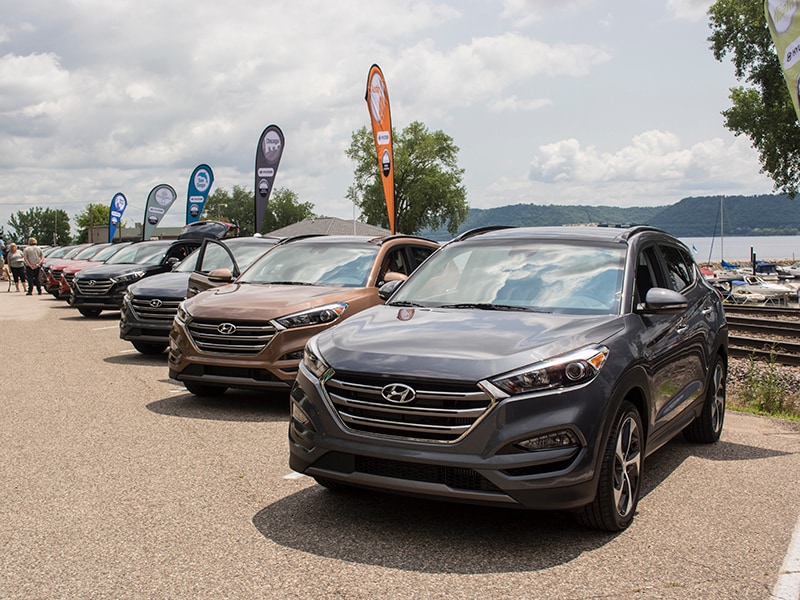
Design
The 2016 Hyundai Tucson’s design can best be described as striking. Using version 2.0 of the automaker’s fluidic sculpture design language, the new Tucson boasts a look that is more athletic. Such design touches include a hexagonal grille, slimmer headlights, low-profile roof rails, and wheel arches that are raked forward. 17-inch wheels come standard on the SE and Eco models; larger 19-inch wheels are standard on the Sport and Limited models.
The interior doesn’t fully match the exterior’s striking look, but Hyundai has done an impressive job of getting close. A wraparound dash design boasts a fair amount of soft-touch materials and contrasting trim pieces.

Comfort and Cargo
The 2016 Tucson scores big when it comes to comfort. Passengers up front are treated to supportive seats with a number of adjustments to help find that perfect position. Backseat passengers will find loads of head and legroom, along with the ability to recline the seat to make themselves a bit more comfortable.
In terms of cargo space, Tucson is on the small side when compared to the best-sellers in the class. With the seats up, the 2016 Tucson boasts 31 cubic feet of usable area - this is 4.2 cubic feet smaller than the best-selling Honda CR-V. Fold the seats down and space increases to 61.9 cubic feet which, again, is bested by the CR-V's 8 cubic feet.

Features and Controls
Hyundai does an excellent job when it comes to equipping their vehicles. The base SE model nets a five-inch touchscreen radio with a backup camera, Bluetooth, and keyless entry. From there, Hyundai increases the amount of equipment ranging from an 8-inch touchscreen with navigation to dual-zone climate control, push-button start, and windshield-wiper de-icer.
Controls are within easy reach of the driver and passenger and falls easy to hand thanks to a simple layout. Meanwhile, the 5-inch and 8-inch touchscreens are some of the best in the industry with an easy to understand interface and quick response times.
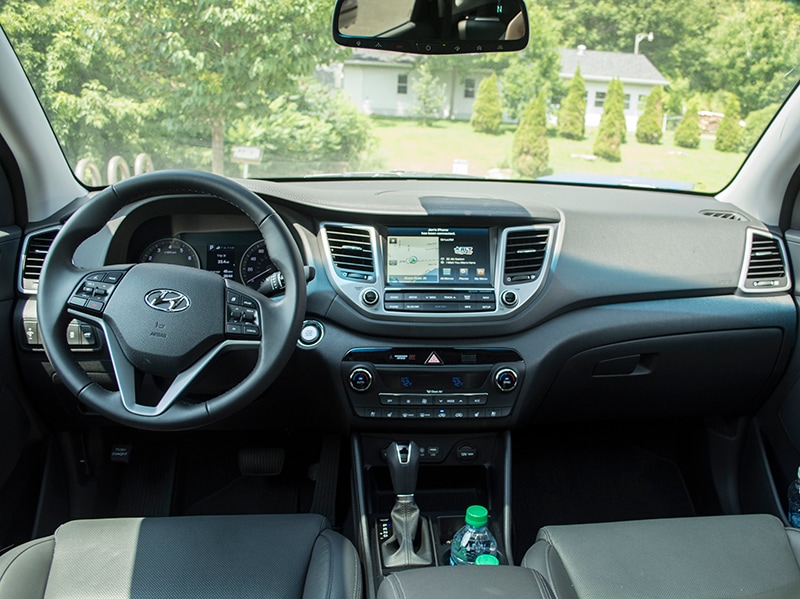
Safety
One of the key items Hyundai focused on with the 2016 Tucson was safety. Compared to the outgoing model, Hyundai used more high-strength steel to improve overall strength and rigidity. There’s also a full suite of airbags to protect all passengers.
In terms of accident prevention, Hyundai also equipped all Tucsons with a backup camera and traction and stability control. Higher trim models get blind spot detection with rear cross-traffic alert, lane departure warning, and automatic emergency braking with pedestrian detection.
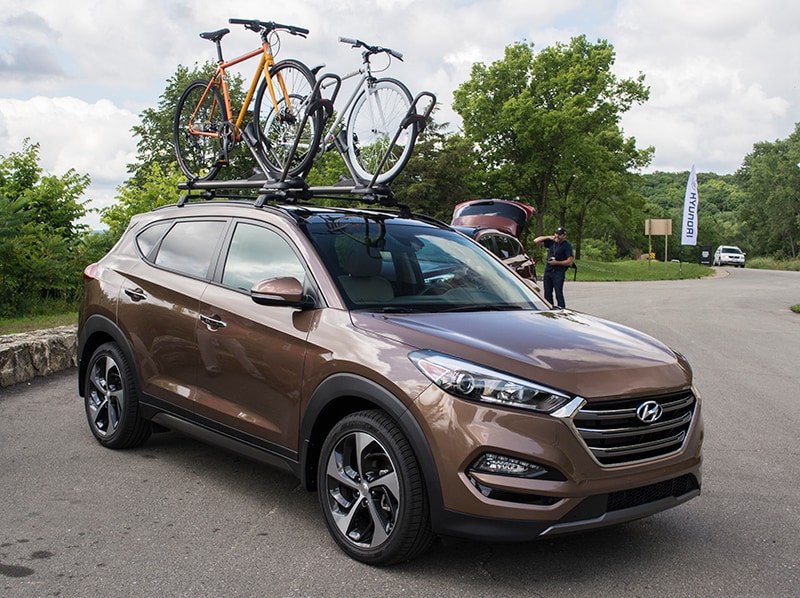
Engines
The Tucson SE gets the 2.0L GDI four-cylinder from the Elantra compact. The base engine produces 164 horsepower and 151 pound-feet of torque and is paired with a six-speed automatic. Fuel economy is rated at 21 City/31 Highway/26 Combined for the front-wheel drive model. All-wheel drive models see slightly lower numbers of 21 City/26 Highway/ 23 Combined.
Eco and higher trims get the turbocharged 1.6L four-cylinder from the Sonata Eco. Performance figures stand at 175 horsepower and 195 pound-feet of torque. The turbo engine is paired with a seven-speed EcoShift dual-clutch automatic. Fuel economy figures vary depending on model selection. The Tucson Eco sees ratings of 26 City/33 Highway/29 Combined for the front-wheel drive model, and 25 City/31 Highway/27 Combined for the all-wheel drive model. The Sport and Limited trims get 25 City/30 Highway/27 Combined for front-wheel drive, and 24 City/28 Highway/26 Combined for all-wheel drive.
Why is there a difference between the Eco and Sport/Limited fuel economy numbers? It mostly comes down to wheels. The Eco has 17-inch wheels, while Sport/Limited get larger 19-inch wheels.
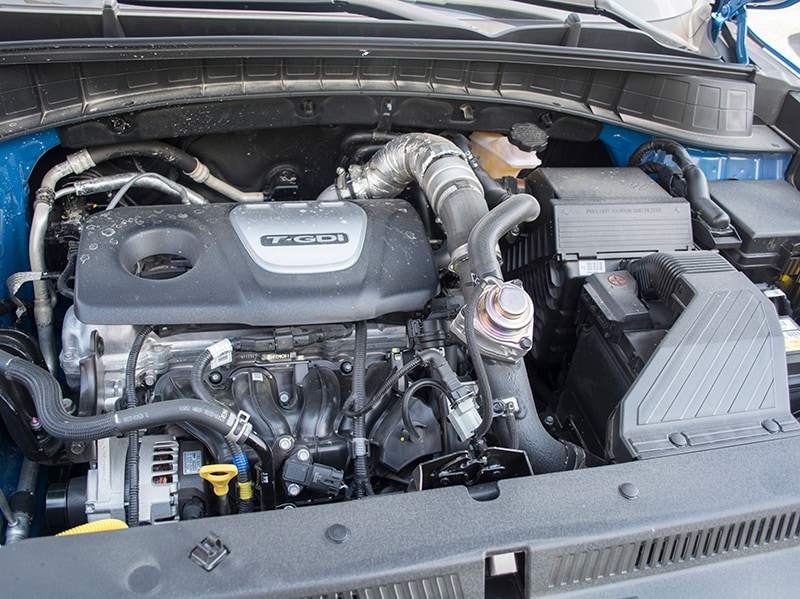
Driving Impressions
Before I dive into my thoughts on how the 2016 Tucson fared during our drive, it's important to note that my impressions are based only on the turbo 1.6L. I didn’t get the chance to get behind the wheel of the Tucson equipped with the 2.0L during the first drive, which is the more economical choice.
The turbo 1.6L is a very potent engine and makes the Tucson feel light on its feet. This is due to the 195 pound-feet arriving at 1,500 rpm and continuing onwards to 4,000 rpm. So in situations where you need to make a pass or merge onto the freeway, the engine is ready and willing to get you up to speed. Hyundai has also made some improvements to the seven-speed EcoShift dual-clutch automatic to make the shifts much smoother. The difference is apparent as the transmission delivers a fast and smooth response.
In terms of ride and handling, the Tucson strikes a nice balance between comfort and sport. The suspension isolates bumps and road imperfections to deliver a pleasant ride for everyone inside. Hyundai has also worked on improving noise isolation on the Tucson with more sound dampening materials. Wind and road noise are kept quiet and could fool you into thinking that you’re driving a more expensive vehicle.
When the road gets curvy, the Tucson mostly shines. The vehicle feels planted around corners and there is no sign of body roll. The only downside is the Tucson’s steering. There isn’t enough feel to tell the driver what is going on. Not helping matters is a dead zone in the steering when you begin turning the wheel. The wheel will begin to tighten up as you turn further along, but this doesn’t really inspire confidence for a driver. For most buyers, though, this will probably rank as only a minor concern.

Final Thoughts
Hyundai has done it once again with the 2016 Tucson. The redesigned model brings forth a competitive package with an extensive features list, improved driving dynamics, and a distinctive design. Those who want a bit more fun in their driving should give the Mazda CX-5 a look. But if you are considering the usual suspects of the Honda CR-V, Subaru Forester, and Toyota RAV4, then the Hyundai Tucson deserves a long look too.
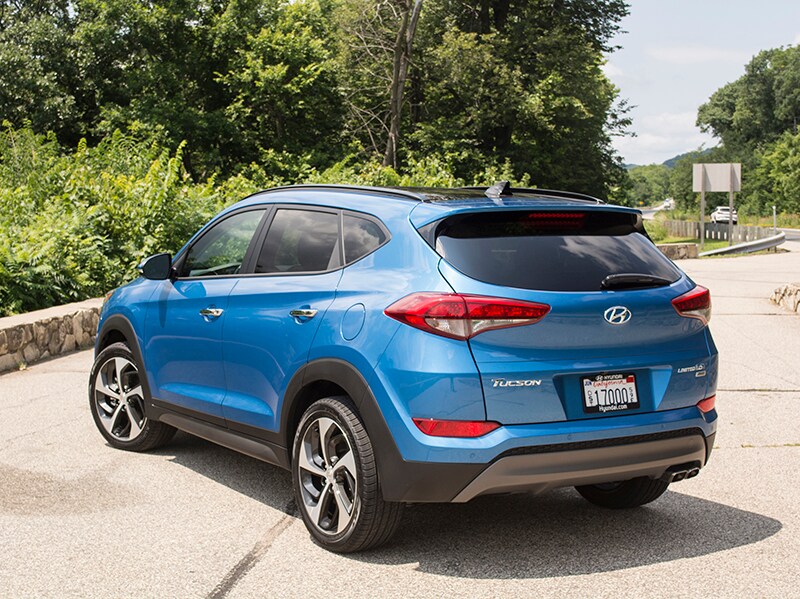
Pros and Cons
Pros
- Handsome Design
- Punchy Turbo-Four Engine
- Improved Seven-Speed Dual-Clutch Automatic
- Comfortable Ride
- Extensive List of Standard Features
Cons
- Small Cargo Space
- Steering Needs A Bit More Work
